Planning worship?
Check out our sister site, ZeteoSearch.org,
for 20+ additional resources related to your search.
- |
User Links
Person Results
‹ Return to hymnal
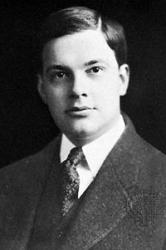
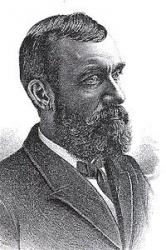

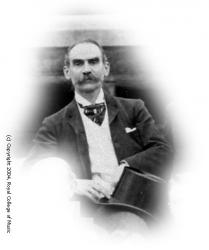
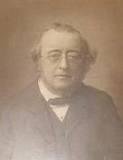
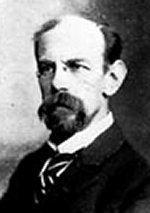
Export as CSV
Nathaniel S. Godfrey
1817 - 1883 Hymnal Number: 462 Composer of "ELLINGHAM" in Hymns for the Living Age Born: November, 30, 1817, London, England.
Died: October 26, 1883, Southsea, Hampshire, England.
Son of an apothecary at Turvey, Bedfordshire, Godfrey was educated at St. Catharine’s College, Cambridge (summa cum laude, 1847). He served as Curate of Swansea (1847-48) and Biddenham, Bedford (1848-50). He resigned in 1858 to become minister and Perpetual Curate at St. Bartholomew’s Temperance Church in Portsea, Hampshire. While at Portsea, he was suspended for three years for practicing spiritualism.
--www.hymntime.com/tch/
Nathaniel S. Godfrey
Joyce Kilmer

1886 - 1918 Person Name: Joyce Kilmer (1886-1918) Hymnal Number: 175 Author of "No longer of him be it said" in Hymns for the Living Age Joyce Kilmer (born as Alfred Joyce Kilmer; 6 December 1886 – 30 July 1918) was an American writer and poet mainly remembered for a short poem titled "Trees" (1913), which was published in the collection Trees and Other Poems in 1914. Though a prolific poet whose works celebrated the common beauty of the natural world as well as his Roman Catholic religious faith, Kilmer was also a journalist, literary critic, lecturer, and editor. While most of his works are largely unknown, a select few of his poems remain popular and are published frequently in anthologies. Several critics—including both Kilmer's contemporaries and modern scholars—have disparaged Kilmer's work as being too simple and overly sentimental, and suggested that his style was far too traditional, even archaic. Many writers, including notably Ogden Nash, have parodied Kilmer's work and style—as attested by the many parodies of "Trees".
At the time of his deployment to Europe during World War I, Kilmer was considered the leading American Roman Catholic poet and lecturer of his generation, whom critics often compared to British contemporaries G. K. Chesterton (1874–1936) and Hilaire Belloc (1870–1953). He enlisted in the New York National Guard and was deployed to France with the 69th Infantry Regiment (the famous "Fighting 69th") in 1917. He was killed by a sniper's bullet at the Second Battle of the Marne in 1918 at the age of 31. He was married to Aline Murray, also an accomplished poet and author, with whom he had five children.
Kilmer was born 6 December 1886 in New Brunswick, New Jersey, the fourth and youngest child of Annie Ellen Kilburn (1849–1932), a minor writer and composer, and Dr. Frederick Barnett Kilmer (1851–1934), a physician and analytical chemist employed by the Johnson and Johnson Company and inventor of the company's baby powder.] He was named Alfred Joyce Kilmer after two priests at Christ Church in New Brunswick: Alfred R. Taylor, the curate; and the Rev. Dr. Elisha Brooks Joyce (1857–1926), the rector. Christ Church is the oldest Episcopal parish in New Brunswick and the Kilmer family were parishioners. Rector Joyce, who served the parish from 1883 to 1916, baptised the young Kilmer. Kilmer's birthplace in New Brunswick, where the Kilmer family lived from 1886 to 1892, is still standing, and houses a small museum to Kilmer, as well as a few Middlesex County government offices.
Kilmer entered Rutgers College Grammar School (now Rutgers Preparatory School) in 1895 at the age of 8. During his years at the Grammar School, Kilmer was editor-in-chief of the school's paper, the Argo, and loved the classics but had difficulty with Greek. He won the first Lane Classical Prize, for oratory, and obtained a scholarship to Rutgers College which he would attend the following year. Despite his difficulties with Greek and mathematics, he stood at the head of his class in preparatory school.
After graduating from Rutgers College Grammar School in 1904, he continued his education at Rutgers College (now Rutgers University) from 1904 to 1906. At Rutgers, Kilmer was associate editor of the Targum, the campus newspaper, and a member of the Delta Upsilon fraternity. However, he was unable to complete the curriculum's rigorous mathematics requirement and was asked to repeat his sophomore year. Under pressure from his mother, Kilmer transferred to Columbia University in New York City.
At Columbia, Kilmer was vice-president of the Philolexian Society (a literary society), associate editor of Columbia Spectator (the campus newspaper), and member of the Debating Union. He completed his Bachelor of Arts (A.B.) degree and graduated from Columbia on 23 May 1908. Shortly after graduation, on 9 June 1908, he married Aline Murray (1888–1941), a fellow poet to whom he had been engaged since his sophomore year at Rutgers. The Kilmers had five children: Kenton Sinclair Kilmer (1909–1995); Michael Barry Kilmer (1916–1927); Deborah ("Sister Michael") Clanton Kilmer (1914–1999) who was a Catholic nun at the Saint Benedict’s Monastery; Rose Kilburn Kilmer (1912–1917); and Christopher Kilmer (1917–1984).
In the autumn of 1908, Kilmer was employed teaching Latin at Morristown High School in Morristown, New Jersey.[1] At this time, he began to submit essays to Red Cross Notes (including his first published piece—an essay on the "Psychology of Advertising") and his early poems to literary periodicals. Kilmer also wrote book reviews for The Literary Digest, Town & Country, The Nation, and The New York Times. By June 1909, Kilmer had abandoned any aspirations to continue teaching and relocated to New York City where he focused solely on developing a career as a writer.
From 1909–1912, Kilmer was employed by Funk and Wagnalls, which was preparing an edition of The Standard Dictionary that would be published in 1912.[1] According to Hillis, Kilmer's job "was to define ordinary words assigned to him at five cents for each word defined. This was a job at which one would ordinarily earn ten to twelve dollars a week, but Kilmer attacked the task with such vigor and speed that it was soon thought wisest to put him on a regular salary."
In 1911, Kilmer's first book of verse, entitled Summer of Love was published. Kilmer would later write that "...some of the poems in it, those inspired by genuine love, are not things of which to be ashamed, and you, understanding, would not be offended by the others."
In 1912, Kilmer became a special writer for the New York Times Review of Books and the New York Times Sunday Magazine and was often engaged in lecturing. He moved to Mahwah, New Jersey, where he resided until his service and death in World War I. By this time, he had become established as a published poet, and as a popular lecturer. According to Robert Holliday, Kilmer "frequently neglected to make any preparation for his speeches, not even choosing a subject until the beginning of the dinner which was to culminate in a specimen of his oratory. His constant research for the dictionary, and, later on, for his New York Times articles, must have given him a store of knowledge at his fingertips to be produced at a moment's notice for these emergencies."
When the Kilmers' daughter Rose (1912–1917) was stricken with poliomyelitis (also known as infantile paralysis) shortly after birth, they turned to their religious faith for comfort. A series of correspondence between Kilmer and Father James J. Daly led the Kilmers to convert to Roman Catholicism and they were received in the church in 1913. In one of these letters, Kilmer writes that he "believed in the Catholic position, the Catholic view of ethics and aesthetics, for a long time" and he "wanted something not intellectual, some conviction not mental – in fact I wanted Faith." Kilmer would stop "every morning for months" on his way "to the office and prayed for faith" claiming that when "faith did come, it came, I think, by way of my little paralyzed daughter. Her lifeless hands led me; I think her tiny feet know beautiful paths. You understand this and it gives me a selfish pleasure to write it down."
With the publication of "Trees" in the magazine Poetry in August 1913, Kilmer gained immense popularity as a poet across the United States. He had established himself as a successful lecturer—particularly one seeking to reach a Catholic audience. His close friend and editor, Robert Holliday, wrote that it "is not an unsupported assertion to say that he was in his time and place the laureate of the Catholic Church." Trees and Other Poems (1914) was published the following year. Over the next few years, Kilmer was prolific in his output—managing an intense schedule of lectures, publishing a large number of essays and literary criticism, and writing poetry. In 1915, he became poetry editor of Current Literature and contributing editor of Warner's Library of the World's Best Literature. In 1916 and 1917, before the American entry into World War I, Kilmer would publish four books: The Circus and Other Essays (1916), a series of interviews with literary personages entitled Literature in the Making (1917), Main Street and Other Poems (1917), and Dreams and Images: An Anthology of Catholic Poets (1917)
In April 1917, a few days after the United States entered World War I, Kilmer enlisted in the Seventh Regiment of the New York National Guard. In August, Kilmer was assigned as a statistician with the U.S. 69th Infantry Regiment (better known as the "Fighting 69th" and later re-designated the 165th Infantry Regiment), of the 42nd "Rainbow" Division, and quickly rose to the rank of sergeant. Though he was eligible for commission as an officer and often recommended for such posts during the course of the war, Kilmer refused, stating that he would rather be a sergeant in the Fighting 69th than an officer in any other regiment.
Shortly before his deployment to Europe, the Kilmers' daughter Rose had died, and twelve days later, their son Christopher was born. Before his departure, Kilmer had contracted with publishers to write a book about the war, deciding upon the title Here and There with the Fighting Sixty-Ninth. The regiment arrived in France in November 1917, and Kilmer wrote to his wife that he had not written "anything in prose or verse since I got here—except statistics—but I've stored up a lot of memories to turn into copy when I get a chance." Kilmer did not write such a book; however, toward the end of the year, he did find time to write prose sketches and poetry. The most notable of his poems during this period was "Rouge Bouquet " (1918) which commemorated the deaths of two dozen members of his regiment in an German artillery barrage on American trench positions in the Rouge Bouquet forest north-east of the French village of Baccarat. At the time, this was a relatively quiet sector of the front, but the first battalion was struck by a German heavy artillery bombardment on the afternoon of 7 March 1918 that buried 21 men of the unit, killing 19 (of which 14 remained entombed).
Kilmer led a scouting party to find the position of a German machine gun. When his comrades found him, some time later, they thought at first that he was peering over the edge of a little hill, where he had crawled for a better view. When he did not answer their call, they ran to him and found him dead. According to Father Francis P. Duffy: “A bullet had pierced his brain. His body was carried in and buried by the side of Ames. God rest his dear and gallant soul.” A sniper's bullet likely killed him immediately. According to military records, Kilmer died on the battlefield near Muercy Farm, beside the Ourcq River near the village of Seringes-et-Nesles, in France, on 30 July 1918 at the age of 31. For his valor, Kilmer was posthumously awarded the Croix de Guerre (War Cross) by the French Republic.
Kilmer was buried in the Oise-Aisne American Cemetery and Memorial, near Fere-en-Tardenois, Aisne, Picardy, France. A cenotaph erected to his memory is located on the Kilmer family plot in Elmwood Cemetery, in New Brunswick, New Jersey. A memorial mass was held at St. Patrick's Cathedral in Manhattan on 14 October 1918.
--en.wikipedia.org/wiki/
Joyce Kilmer
Oscar Clute

1837 - 1902 Person Name: Oscar Clute, 1840-1901 Hymnal Number: 72 Author of "O love of God most full" in Hymns for the Living Age Born: March 11, 1837, Bethlehem (near Albany), New York.
Died: January 27, 1903, Los Angeles, California.
Buried: Los Angeles National Cemetery, Los Angeles, California.
After teaching school (1854-59), Clute graduated from the Michigan Agricultural College, then taught math 1862-66 before studying at Meadville Theological Seminary. He pastored in Vineland and Newark, New Jersey; Keokuk and Iowa City, Iowa; and Pomona, California. He also served as the fourth president of the Michigan Agricultural College (now Michigan State College) (1889-93) and Florida Agricultural College (1893-97). He spent his last years retired in California.
--www.hymntime.com/tch
Oscar Clute
Harriet M. Kimball

1834 - 1917 Person Name: Harriet McEwen Kimball Hymnal Number: 46 Author of "The day is ended" in Hymns for the Living Age Kimball, Harriet McEwan, a native and resident of Portsmouth, Newhaven, is the author of Hymns, Boston, 1866; Swallow Flights of Song, 1874, &c. Her hymns include:—
1. At times on Tabor's height. Faith and Joy
2. Dear Lord, to Thee alone. Lent.
3. It is an easy thing to say. Humble Service.
4. We have no tears Thou wilt not dry. Affliction. Appeared in the Poets of Portsmouth, 1864, and the Unitarian Hymns of the Spirit, 1864, and others. In Miss Kimball's Hymns, 1866, this hymn begins with stanza iii. of "Jesus the Ladder of my faith."
Several of Miss Kimball's poems were included in Baynes's Illustrated Book of Sacred Poems, 1867. [Rev. F. M. Bird, M.A.]
--John Julian, Dictionary of Hymnology (1907)
===================
Kimball, Harriet M., p. 624, ii., b. Nov. 2, 1834, and a Roman Catholic. From her hymn, "Jesus, the Ladder of my faith," p. 624, iii. 3, another cento, beginning "Sweeter to Jesus when on earth/* is taken. It is in The Pilgrim Hymnal, 1904.
--John Julian, Dictionary of Hymnology, New Supplement (1907)
Harriet M. Kimball
Alfred J. Caldicott

1842 - 1897 Person Name: Alfred J. Caldicott, 1875 Hymnal Number: 72 Composer of "PASTOR BONUS" in Hymns for the Living Age The eldest son of a hop merchant and amateur musician at Worcester, the Alfred James Caldicott was born there on November 26, 1842. Like his six brothers, he was a chorister in the Cathedral choir, and at the age of fourteen was articled to the late Mr. Done, the Cathedral organist. He subsequently entered the Conservatorium at Leipzig, where he studied under Moscheles, Hauptmann, and Plaidy. On his return to Worcester he became organist of St. Stephen's Church and to the Corporation, and also conductor of the Worcester Musical Society. In 1878 he took the degree of Bachelor in Music at the University of Cambridge, under the Professorate of Sir G.A.Macfarren. Three years later his sacred cantata "The Widow of Nain" was performed at the Worcester Musical Festival. After a short residence at Torquay in 1882, Mr. Caldicott settled in London in the following year, and was appointed a professor of harmony at the Royal College of Music.
In 1885 he became musical director of the now defunct Albert Palace at Battersea. He toured with an opera company in America, 1890–91 and was conductor at the Comedy and other theatres. Mr Caldicott is, however, best known as a composer of vocal music cast in a light vein, in which he was highly successful. For the German Reed entertainments he composed "Treasure Trove" (1883) and other operettas, thirteen in all. "John Smith" and "The Girton Girl and the Milkmaid", composed for London theatres, were of a similar nature. Two cantatas for female voices – "A Rhine Legend" and "Queen of May" – must also be mentioned. Mr. Caldicott's humorous part-songs, of which "Humpty Dumpty" (special prize, Manchester Gentlemen's Glee Society, 1878) is a highly characteristic specimen, gave the lamented composer widespread popularity.
--www.cph.rcm.ac.uk/
Alfred J. Caldicott
Charles S. Newhall
1842 - 1935 Hymnal Number: 341 Author of "O Jesus, Master, when today I meet" in Hymns for the Living Age Born: October 4, 1842, Boston, Massachusetts.
Died: April 11, 1935, Berkeley, California.
Newhall attended Amherst College and Union Theological Seminary, and was ordained a Congregational minister. He pastored over 25 years, then became associated with the United States Forestry Service and developed a reputation as an outstanding naturalist. He retired in 1905 to Berkeley, California.
--Reynolds, William Jensen. Hymns of Our Faith. Nashville, Tennessee: Broadman Press, 1964.
http://www.hymntime.com/tch/bio/n/e/w/newhall_cs.htm
Charles S. Newhall
Frank W. Gunsaulus
1856 - 1921 Person Name: Frank W. Gunsoulus, 1856-1921 Hymnal Number: 302 Author of "O God would I might bring to thee" in Hymns for the Living Age
Frank W. Gunsaulus
Alfred R. Gaul

1837 - 1913 Person Name: Alfred A. Gaul, (1837- ) Hymnal Number: 512 Composer of "HOLY CITY" in Hymns for the Living Age
Alfred R. Gaul
Alonzo P. Howard
1838 - 1902 Person Name: Alonzo P. Howard, 1838-1902 Hymnal Number: 463 Composer of "HOWARD" in Hymns for the Living Age Born: June 20, 1838, Boston, Massachusetts.
Died: August 28, 1902, York Harbor, Maine.
Alonzo Potter Howard lived in Longwood, Massachusetts (now part of the town of Brookline). He worked for the Merrimac Chemical Company for four decades, and was its vice president and treasurer at the time of his death. All his music was published in Boston. His works include:
Selected Christmas Carols, 1892
Sources--
Hughes, p. 441
New York Times, August 29, 1902
© The Cyber Hymnal™ (www.hymntime.com/tch)
Alonzo P. Howard
Henry S. Houseley

1851 - 1925 Person Name: Henry Houseley Hymnal Number: 83 Composer of "DENVER" in Hymns for the Living Age Born in Sutton-in-Ashfield, England, September 20, 1851. Studied at the Royal College of Organists in London, earning an FRCO. Served as organist at St. Luke's, Derby, and St. James', Nottingham, then emigrated to Denver, Colorado, where he succeeded John Gower as organist of St. John's Cathedral. He was a Founder of the American Guild of Organists. Died March 13, 1925.
—AGO Founders Hymnal, p. 98-99
===============
Born: September 20, 1851, Sutton-in-Ashfield, Nottinghamshire, England.
Died: March 13, 1925, Denver, Colorado.
Buried: St. John’s Episcopal Cathedral, Denver, Colorado; his ashes were interred in the east wall of the choir.
Educated in Nottingham & London & by James Turpin, a Fellow of the Royal College of Organists, & Edmund Turpin, Houseley played the organ at St. Luke’s Church, Derby, England; St. Thomas’ Church, Nottingham; of the Sacred Harmonic Society of Nottingham; and was music lecturer at the college in Nottingham. He lived in Denver, Colorado, from 1888 to at least 1901. He became organist and choir director at St. John’s Episcopal Cathedral in 1892 when John Gower left that post; he served there the rest of his life. He was also for 30 years organist of Temple Emmanuel in Denver, for 25 years organist and music director at the Rocky Mountain and Colorado bodies of the Ancient and Accepted Scottish Rite of Freemasons, director of the Denver Symphony Orchestra, and director of the Denver Choral Society, which won a $1,000 prize in a Denver competition in 1896, and first prize at the St. Louis World’s Fair in 1904.
Housley also directed a men’s chorus called the Apollo Club, played the organ at St. Mark’s Episcopal Church and the Oakes Home (an old age home run by the Episcopal Diocese of Colorado), was on the faculties of the Denver Conservatory of Music and the University of Colorado, and was on the board of the Musical Society of Denver. A prolific composer, he wrote anthems, pieces for mixed chorus, arrangements for women’s voices, men’s voices, songs, piano works, organ pieces, and six operas, including Native Silver and Juggler.
--www.hymntime.org/tch
Henry S. Houseley


 My Starred Hymns
My Starred Hymns


